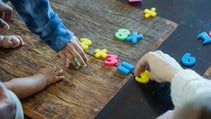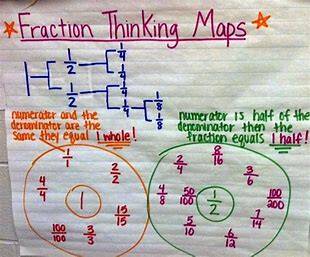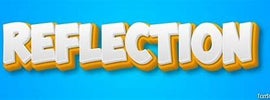Writing to Learn
Writing to learn helps students understand and process new information which focuses more on thinking through ideas. Writing to learn can be informal which includes tasks such as journaling, quick writes, reflections, etc. Writing often requires students to analyze their ideas. Whether explaining math problems or comparing historical events, students can learn to think more deeply when writing to learn. I found a quote that restates why writing to learn can be so beneficial. “The process of writing involves planning, organizing, and reasoning—all essential for critical thinking." — Applebee, A.N. (1984). An example of a WTL strategy for 5th-grade math could be an activity over solving fraction problems. After solving fraction problems, students can complete a short writing prompt explaining how they solved the problem and why their solution makes sense. This helps reinforce the conceptual understanding behind the procedures. Writing to learn can be creative, but the main goal is for students to better understand the content they are learning about.


Lesson Plan: Writing to Learn in Mathematics
Grade Level: 5th Grade
Subject: Mathematics
Duration: 60 minutes
TEKS: (3) Number and operations. The student applies mathematical process standards to develop and use
strategies and methods for positive rational number computations in order to solve problems with
efficiency and accuracy. The student is expected to:
(H) represent and solve addition and subtraction of fractions with unequal denominators
referring to the same whole using objects and pictorial models and properties of
operations.
Objectives:
- Students will be able to explain their mathematical thinking in writing.
- Students will demonstrate their understanding of a mathematical concept through written expression.
- Students will engage in peer review to enhance their writing and mathematical reasoning.
Materials Needed:
- Whiteboard and markers
- Math journals or lined paper
- Pencils
- Sample math problems (printed or on the board)
- Peer review checklist
Lesson Outline:
Introduction (10 minutes)
- Begin with a brief discussion about the importance of explaining math reasoning.
- Ask students why they think writing about math is useful. Allow a few students to share their thoughts.
Mini-Lesson (15 minutes)
- Introduce a math problem that requires the addition of fractions. For example, 2/5 + 1/3
- Solve the problem step-by-step on the whiteboard while explaining each step verbally.
- As a class, model how to write the explanation of the solution in their math journals. Include: The problem statement, steps taken to solve the problem, and the final answer/ conclusion.
Guided Practice (15 minutes)
Provide students with a different fraction addition problem: 1/4 + 1/6
- Allow students to work in pairs to solve the problem and write their explanations in their math journals.
- Circulate around the room to provide support and feedback.
Independent Practice (15 minutes)
- Assign a new problem for students to solve independently: 3/8 +1/2.
- Instruct them to write a detailed explanation of their process and reasoning.
- Remind them to include the problem statement, steps, and conclusion.
Peer Review (5 minutes)
- Have students partner up and exchange their written explanations.
- Give each pair a peer review checklist to guide their feedback, focusing on clarity and completeness.
Closure (5 minutes)
- Gather students’ attention and invite a few to share their written explanations with the class.
- Discuss what they learned about writing in math and how it helped their understanding.
Assessment:
- Review students’ written explanations for clarity, completeness, and mathematical accuracy.
- Use the peer review feedback to gauge students’ understanding and areas for improvement.
Circle Map Example: Understanding Fraction Addition
Outer circle: Key concepts
- Fractions
- Addition
- Numerator
- Denominator
Inner Circle: Specific fraction examples


Reflection:
I would Integrate short writing tasks after math lessons, such as summarizing what they learned, explaining their problem-solving process, or reflecting on their understanding of a concept.
I would also encourage students to maintain a math journal where they can write explanations, note strategies, and reflect on their learning. This allows for ongoing practice and reinforcement.
Supporting Reluctant Writers:
I can demonstrate writing techniques and thought processes using think-aloud strategies so students can see how to articulate their reasoning.
I can also provide templates or graphic organizers (like the Circle Map) to help structure their thoughts and reduce the intimidation of writing.
Supporting Struggling Readers:
Read-aloud sessions can be used to model comprehension strategies. I would discuss the meaning of mathematical vocabulary and concepts as they relate to problems.
I would also incorporate visuals, such as diagrams or charts, alongside written explanations to support understanding.
Supporting English Language Learners (ELLs):
I can introduce key vocabulary and phrases prior to lessons. Use visuals and bilingual resources to help with understanding.
Also, incorporating culturally relevant examples and contexts that resonate with ELLs can help make the content more relatable and engaging.
Supporting Advanced Learners:
Provide more complex, open-ended problems that encourage advanced learners to explore multiple solution paths and articulate their reasoning in depth.
Allow advanced students to create their own problems or to investigate related mathematical concepts, requiring them to write explanations of their findings.
Encourage advanced learners to support their peers by leading small group discussions or tutoring sessions, reinforcing their own understanding as they teach others.
Conclusion: Incorporating WTL in math helps students strengthen their cognitive skills. I will be able to create an inclusive space that helps build students math and writing skills. WTL can be used in all subjects, not only math!
Create Your Own Website With Webador